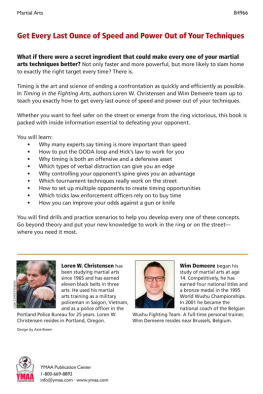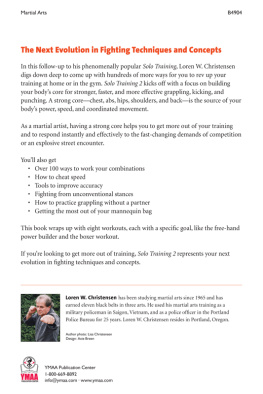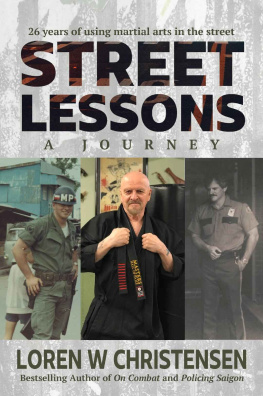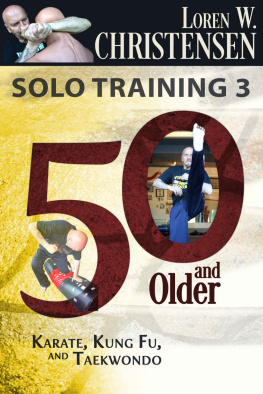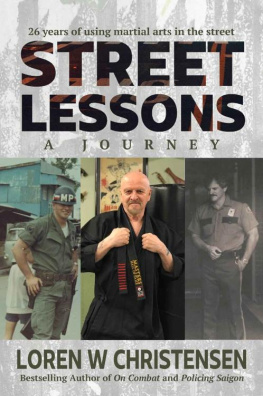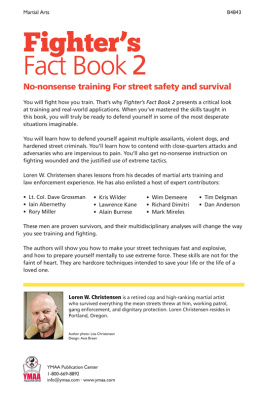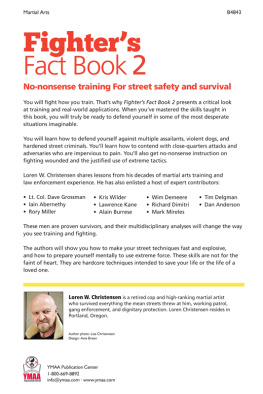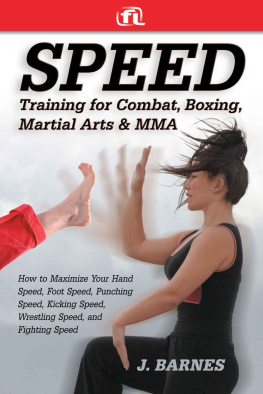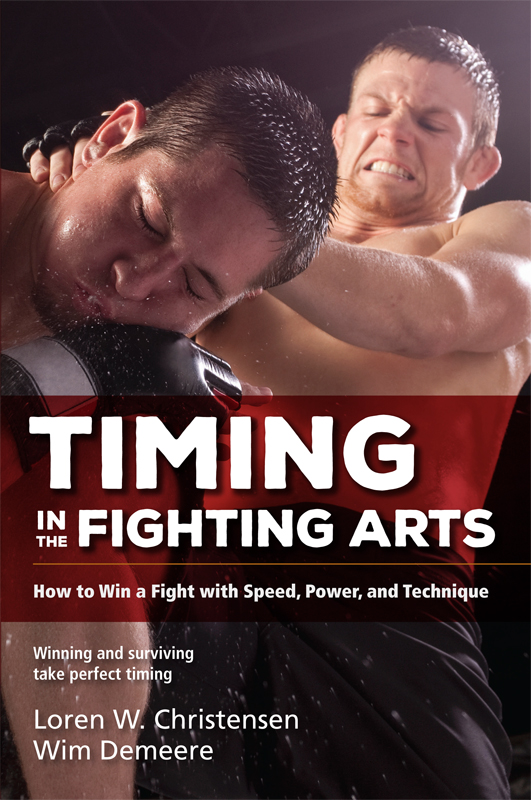T IMING IN THE F IGHTING A RTS
Your guide to winning in the ring and surviving on the street
Loren W. Christensen
Wim Demeere
YMAA Publication Center, Inc.
Wolfeboro, NH USA
YMAA Publication Center, Inc.
PO Box 480
Wolfeboro, NH 03894
800 669-8892
Paperback ISBN: 9781594394966 (print) ISBN: 9781594394973 (ebook)
All rights reserved including the right of reproduction in whole or in part in any form.
Copyright 2004, 2016 by Loren W. Christensen and Wim Demeere
Publishers Cataloging in Publication
Christensen, Loren W.
Timing in the fighting arts : your guide to winning in the ring and surviving on the street / by Loren W. Christensen, Wim Demeere. 1st ed.
p. cm.
ISBN 9781594394966
1. MArtial artsTraining. 2. Speed. I. Demeere, Wim. II. Title.
GV1102.7.T7C46 2004
796.8dc22
2016944170
The author and publisher of the material are NOT RESPONSIBLE in any manner whatsoever for any injury that may occur through reading or following the instructions in this manual.
The activities, physical or otherwise, described in this manual may be too strenuous or dangerous for some people, and the reader(s) should consult a physician before engaging in them.
Warning: While self-defense is legal, fighting is illegal. If you dont know the difference, youll go to jail because you arent defending yourself. You are fightingor worse. Readers are encouraged to be aware of all appropriate local and national laws relating to self-defense, reasonable force, and the use of weaponry, and act in accordance with all applicable laws at all times. Understand that while legal definitions and interpretations are generally uniform, there are smallbut very importantdifferences from state to state and even city to city. To stay out of jail, you need to know these differences. Neither the author nor the publisher assumes any responsibility for the use or misuse of information contained in this book.
Nothing in this document constitutes a legal opinion, nor should any of its contents be treated as such. While the author believes everything herein is accurate, any questions regarding specific self-defense situations, legal liability, and/or interpretation of federal, state, or local laws should always be addressed by an attorney at law.
When it comes to martial arts, self-defense, and related topics, no text, no matter how well written, can substitute for professional, hands-on instruction. These materials should be used for academic study only.
A GOOD PLAN VIOLENTLY EXECUTED RIGHT NOW
IS FAR BETTER THAN A PERFECT PLAN EXECUTED NEXT WEEK.
~ G ENERAL G EORGE S. P ATTON
Contents
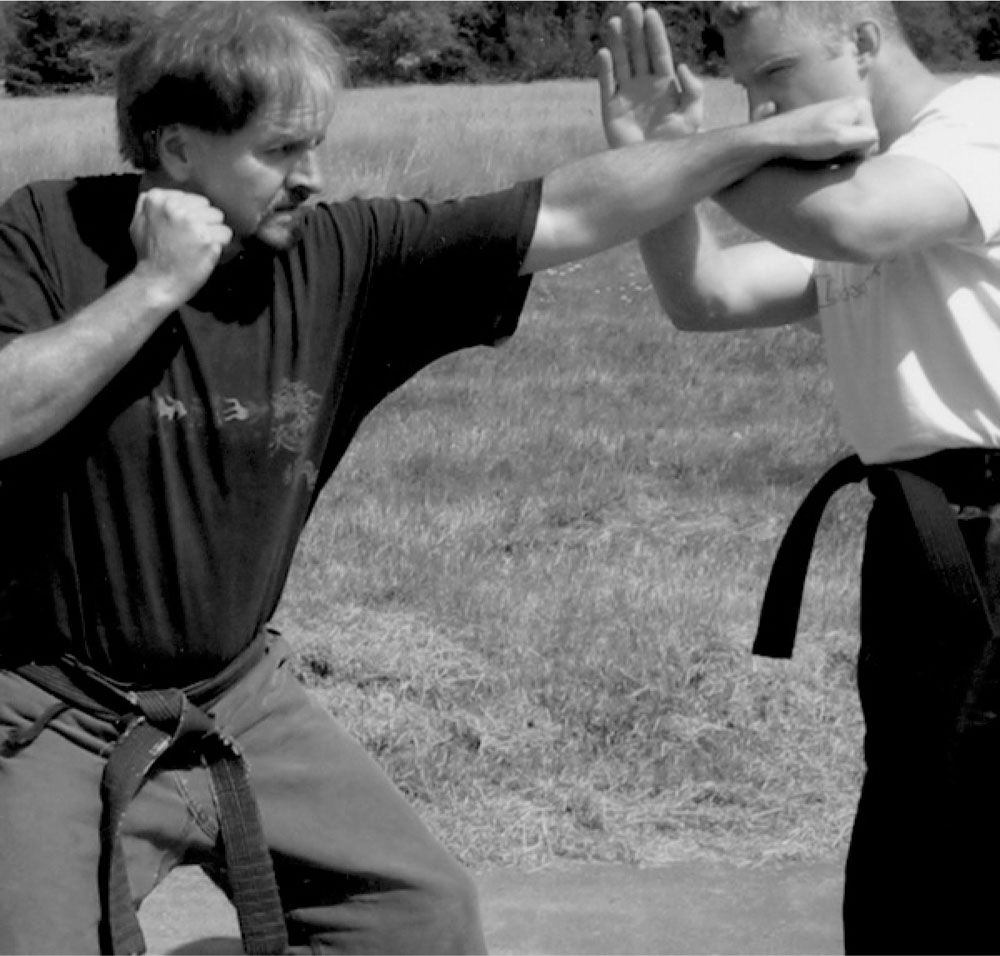
Although timing, precise timing, is the most critical of all martial arts fighting components, its often pushed in the background in favor of stretching, bag work, forms, and reps before a mirror. While flexibility from stretching, power from bag work, precision movement from forms, and speed and coordination from rep practice are certainly important, they are of little value if you cant get your technique to the target at the right moment. With an understanding of timing - knowing when to hit, where to hit, and with which weapon to hit - you dramatically increase your ability to use those well-trained kicks, punches and blocks, and defeat even those fighters possessing speed and power superior to yours. Imagine their amazement. Imagine yours!
If you happen to be exceptionally fast and strong, your timing will be even better when you have a greater understanding of all its facets. Why? Because good speed allows you to take advantage of even the briefest moment of opportunity, and good strength allows you to affect more damage when your blow hits the target.
Then comes Father Time. As it passes, and you get older, your speed and strength begin to wane. What do you do then? First, dont fret about it. Second, reach into the bag of timing tricks crammed into this book and you are good to go long into your retirement years.
What is precise timing?
Seems like a simple enough question, but the answer is big, real big. In fact, this entire book is the answer. For now, lets say that timing is the skill and art of choosing the precise moment to hit, grab, back off, or say the right thing to bring the threat of a fight, or a fight in progress, to a conclusion in your favor. Timing is the ability to take advantage of a window of opportunity. While that phrase is a clich, one that you are going to see over and over throughout this book, it fits our subject matter perfectly. Whether your opponent inadvertently opens a window for you, or you cleverly create a moment that forces him to open it, that is the instant you attack. That is timing.
Here are three real-life situations in which timing was absolutely critical.
*
When co-author Christensen was a police officer, he once faced a mountain of a man on the center span of one of the many high bridges that cross the mighty Willamette River in Portland, Oregon. Five minutes earlier, the radio call reported that a six-feet six, 250-pound man had gone berserk inside a tavern and hurt several patrons before he had fled in the direction of the bridge. Although four officers had been dispatched, Christensen got to the bridge first and spotted the big man lumbering along. He pulled his patrol car to the curb a few feet in front of the giant and asked dispatch to have his backup officers hurry.
Hold it right there, Christensen ordered, after he had exited his car and stepped up on the sidewalk.
The man ignored the command and advanced with a gait not unlike Boris Karloffs in the original Frankenstein movie.
Christensen and the giant stood on the sidewalk at the apex of the bridge, with six busy traffic lanes on one side of them, and on the other, a four-foot railing, then a 60-foot drop into the raging Willamette River.
The giants facial expression read, Youre gonna take a swim, cop, and he stopped for a moment, as if to underscore his threatening look.
Christensen thought of the 30 pounds of gear he was wearing: No, swimming was not an option today. He needed a different plan, but considering the guys size, what would it be?
The big guy lumbered forward again, and Christensen stepped back once, twice, three times. When a blaring horn distracted the giant for half a second, Christensen seized the moment and slid his baton from its belt ring, holding it out of sight behind his rear leg. Stop! Christensen commanded, but the man kept coming, raising his arms forward, reaching, just like the stalking Frankenstein monster. Christensen knew he was going to have to fight him, but he also knew it was a good idea to soften him first.
Just as the mans extended hands got within range, his eyes darted to the side at a passing, noisy truck. Another moment. Another window of opportunity, opening just a crack and ever so briefly. Christensen whipped his baton in a blurry arc into the thick, stubby fingers of the giants closest hand.
The big guy belched a curse and snapped his wounded hand back against his chest, covering it with his other and bending forward at the waist in pain. In one motion, Christensen stabbed his baton back into its ring holder, grabbed the mans huge head and yanked him forcefully onto his belly. Backup officers screeched to the curb and, a moment later, they had wrestled the man into handcuffs.

